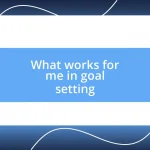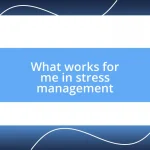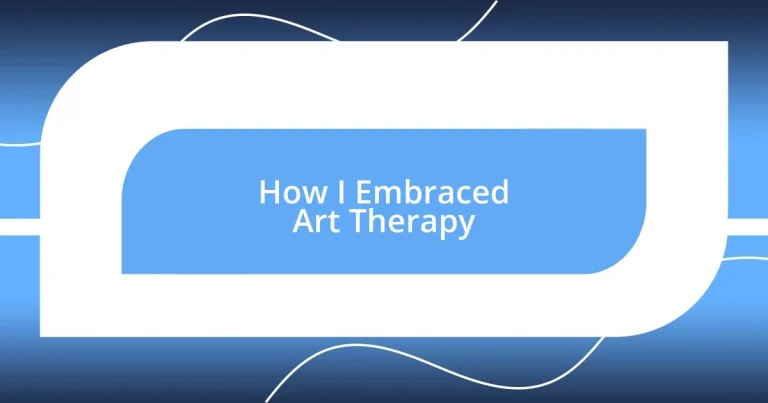Key takeaways:
- Art therapy fosters emotional healing and self-discovery, helping individuals express unspoken feelings and improve mental health by reducing anxiety and depression.
- Choosing the right art supplies can enhance creativity and emotional connection, with preferences varying based on personal comfort and inspiration.
- Overcoming emotional barriers in art involves embracing vulnerability and sharing experiences with others, which can deepen connections and validate feelings through creative expression.
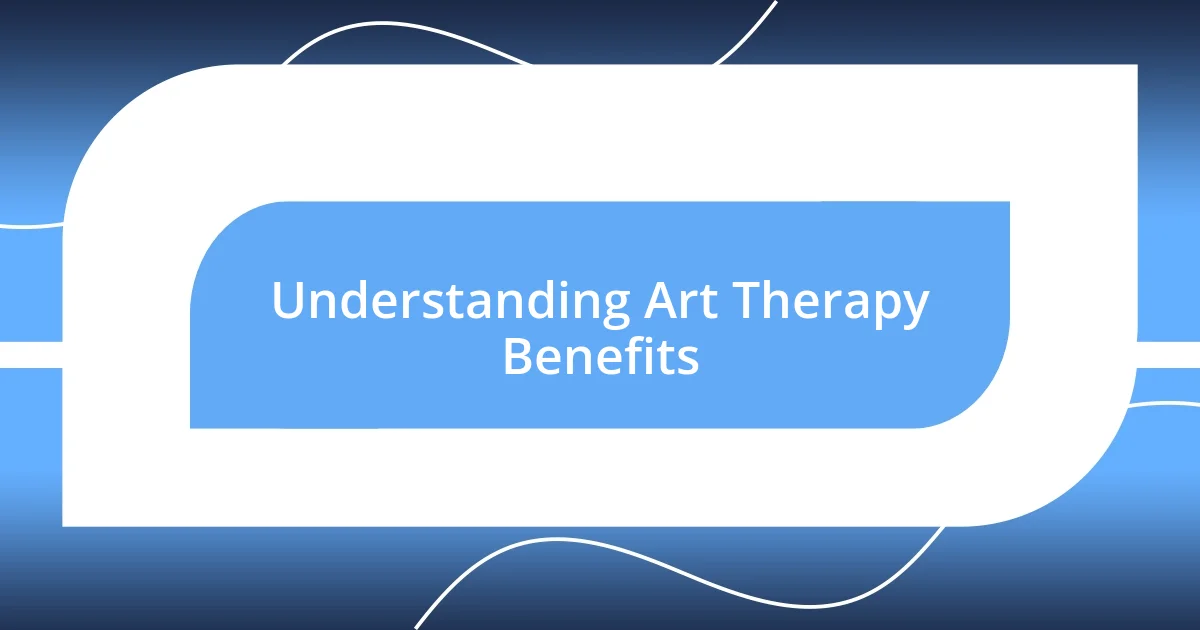
Understanding Art Therapy Benefits
Art therapy has a remarkable ability to foster emotional healing and self-discovery. I remember the first time I picked up a paintbrush during a therapy session; I felt an overwhelming sense of freedom. The colors flowed onto the canvas, allowing me to express feelings I hadn’t yet found words for—do you ever feel trapped by your emotions? Isn’t it liberating to think that a simple brushstroke can break those barriers?
One of the key benefits of art therapy is its capacity to improve mental health by reducing anxiety and depression. In my experience, working with clay was particularly therapeutic; molding it with my hands calmed my racing thoughts. There’s something inherently grounding about creating something tangible, isn’t there? It provides a distraction, helping to quiet the chaos swirling in our minds.
Moreover, art therapy serves as a powerful tool for enhancing self-esteem and self-awareness. I once created a collage representing my journey through challenges, and every piece I added helped me reflect on my resilience. Have you ever made something that made you proud? It’s incredible how visual representations of our experiences can validate our struggles and victories, making us feel seen and understood.
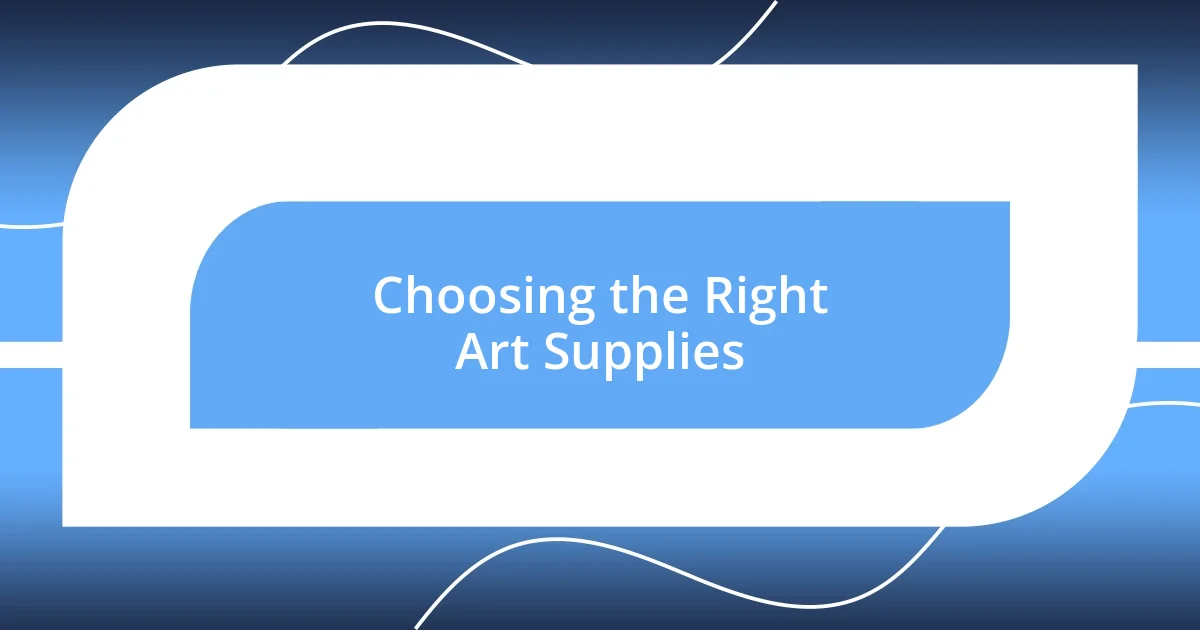
Choosing the Right Art Supplies
Choosing the right art supplies can significantly enhance your experience in art therapy. I recall my first session when I was handed a set of basic crayons. At first, I felt a bit underwhelmed, thinking I needed something more sophisticated. However, as I began to layer colors and blend them, I discovered that those simple crayons tapped into a part of my creativity that I had overlooked. Sometimes, the simplest tools can lead to the most profound expressions.
When selecting art supplies, consider what feels most comfortable and inspiring to you. For example, I’ve tried everything from watercolors to pastels, but the soft texture of pastels holds a special place in my heart. The way they glide on paper instantly evokes joy. Have you ever noticed how certain materials can influence your mood? It’s essential to choose supplies that resonate with your emotional state and artistic vision.
To further understand your options, it’s helpful to compare different types of art supplies based on texture, ease of use, and emotional connection. This table lays out a few choices that have stood out to me:
| Art Supply | Texture | Ease of Use | Emotional Connection |
|---|---|---|---|
| Acrylic Paints | Thick and textured | Moderately easy | Invigorating and bold |
| Watercolors | Smooth and flowing | Easy | Calming and serene |
| Pastels | Soft and buttery | Easy | Joyful and expressive |
By examining your preferences and feelings while using these supplies, you can better navigate your artistic journey in therapy.
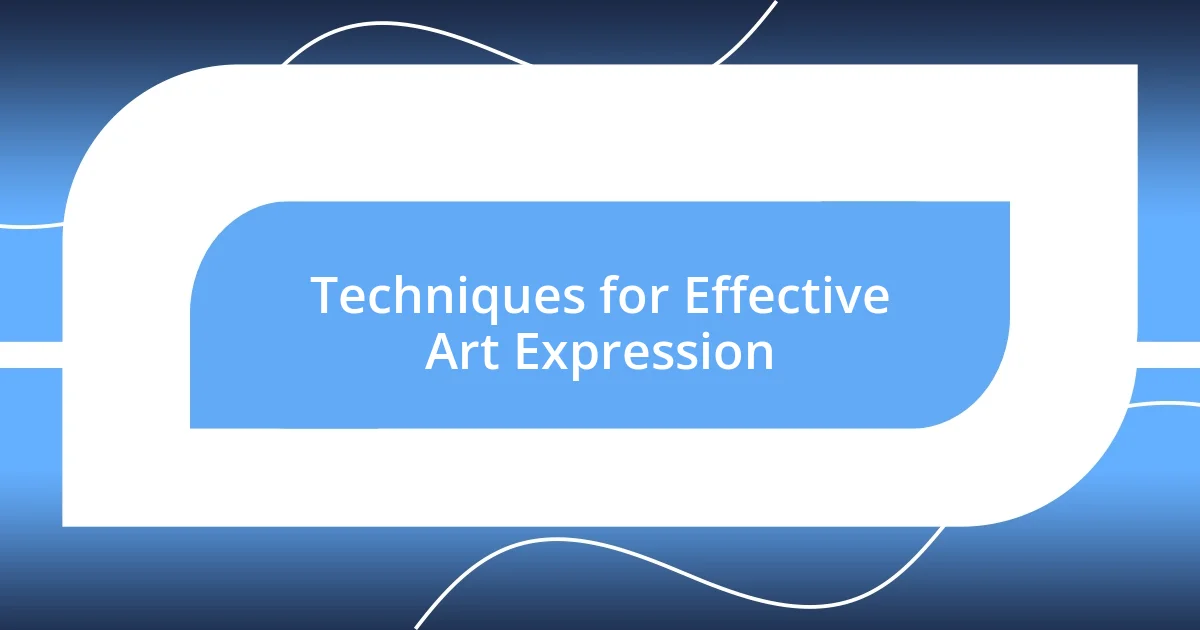
Techniques for Effective Art Expression
Engaging in effective art expression requires a willingness to explore different techniques that resonate with you emotionally. One method that I found particularly liberating was automatic drawing, where I let my hand move freely across the paper without any set intention. It felt almost like the paper was a safe space for my thoughts to dance, unfiltered and raw. Every line drawn revealed thoughts and feelings I had tucked away. Have you ever tried letting go of control in your creative process? It’s astonishing how such a simple act can lead to profound discoveries about oneself.
Another technique I’ve treasured is the use of mixed media. I recall a project where I combined magazine clippings, paint, and fabric to create a vibrant self-portrait. Each element held a story, and blending different materials felt like piecing together my identity. The act of layering not only transformed the artwork visually but also emotionally, allowing me to represent my complex experiences. Here are a few techniques to consider for your own art expression:
- Automatic Drawing: Let your hand flow freely to capture subconscious thoughts.
- Mixed Media: Use various materials for a layered approach that reflects depth.
- Mindful Coloring: Focus on intricate patterns to promote relaxation and mindfulness.
- Nature-Inspired Art: Use natural elements like leaves or flowers to connect with the environment.
- Storyboarding: Create a visual narrative of your journey to clarify and process emotions.
These techniques can help you tap into your creativity and express feelings that might otherwise remain unspoken.
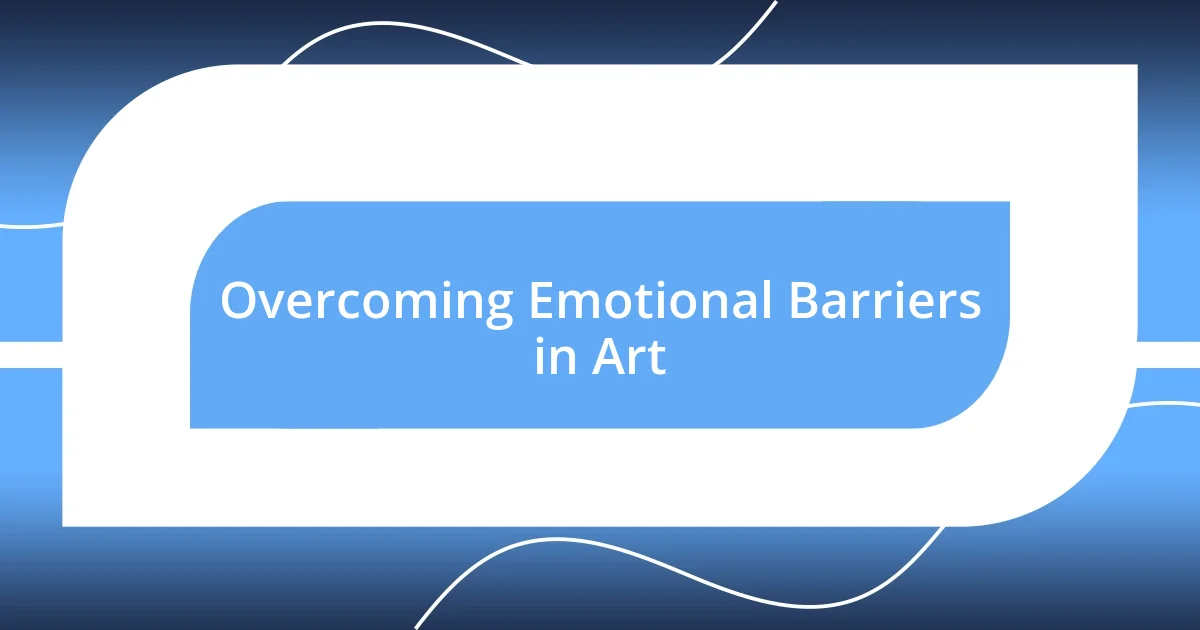
Overcoming Emotional Barriers in Art
Sometimes, before I could even put pencil to paper, I found myself wrestling with a whirlwind of insecurities. What if my art wasn’t good enough? I remember one session where I just stared at a blank canvas. What followed was a deep breath and a choice: to surrender my fear and simply create. It’s funny how acknowledging that discomfort became the first step in breaking down those emotional barriers. I learned that it’s not about perfection; it’s about expression.
Tapping into your feelings through art can be overwhelming, especially if you’re holding onto past judgments of yourself. One evening, while playing with colors, I had an unexpected breakthrough. I mixed loud reds and soft blues, channeling anger and sadness without a clear end goal. The rush of emotions poured onto the canvas, and suddenly, I felt lighter. Have you ever let your emotions flow so freely that it surprised you? It was in that moment that I realized, embracing vulnerability was essential for my healing.
I’ve found that sharing my art with a trusted friend can dramatically diminish those emotional roadblocks. I recall introducing my latest piece, a chaotic blend of colors that reflected my inner turmoil. To my surprise, my friend connected with my work on a personal level and opened up about her own experiences. This exchange not only validated my feelings but also reminded me that art is a collective experience, a bridge that can unite us in our struggles. Isn’t it amazing how our stories can intertwine through creativity?
